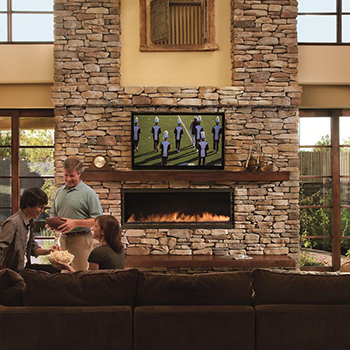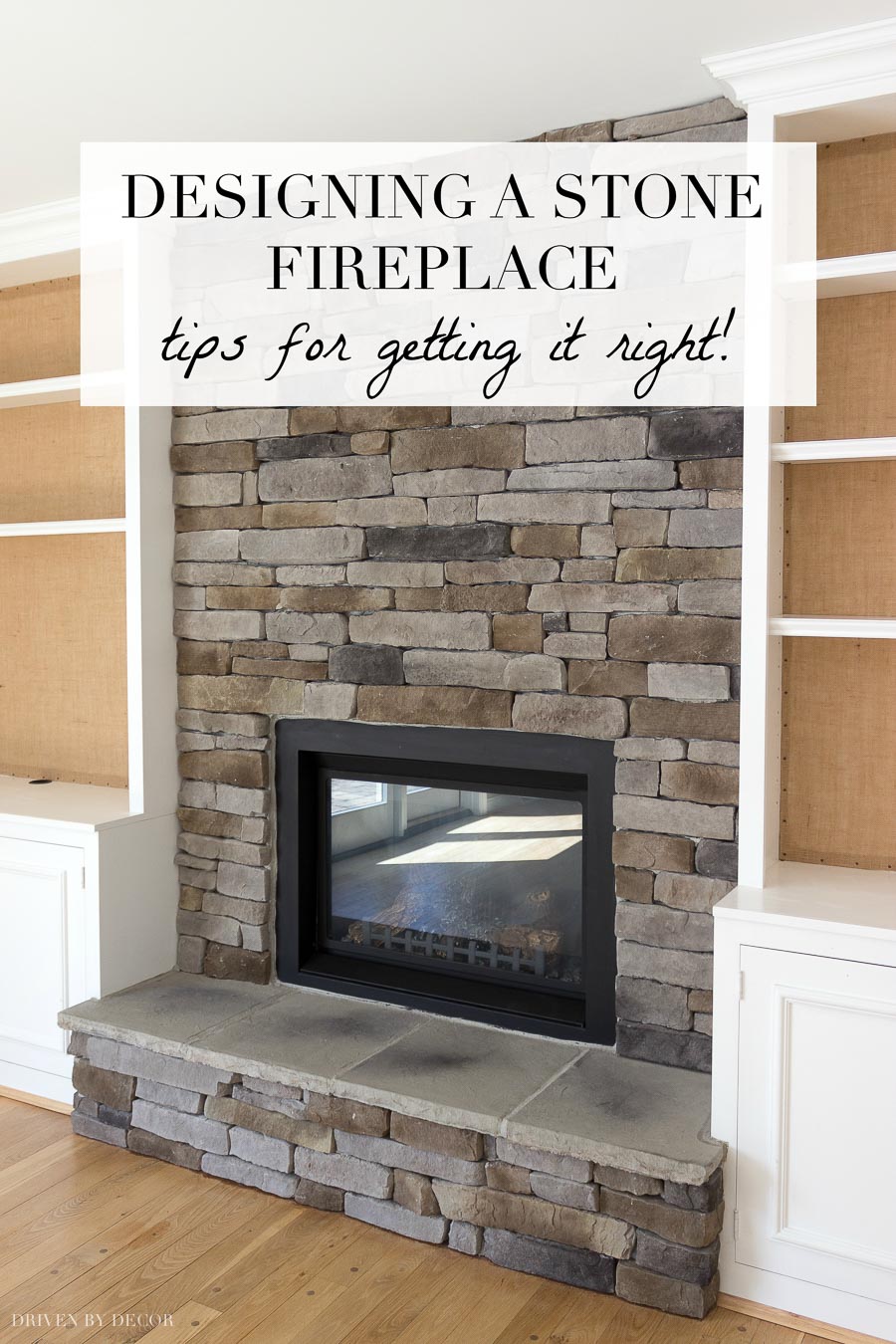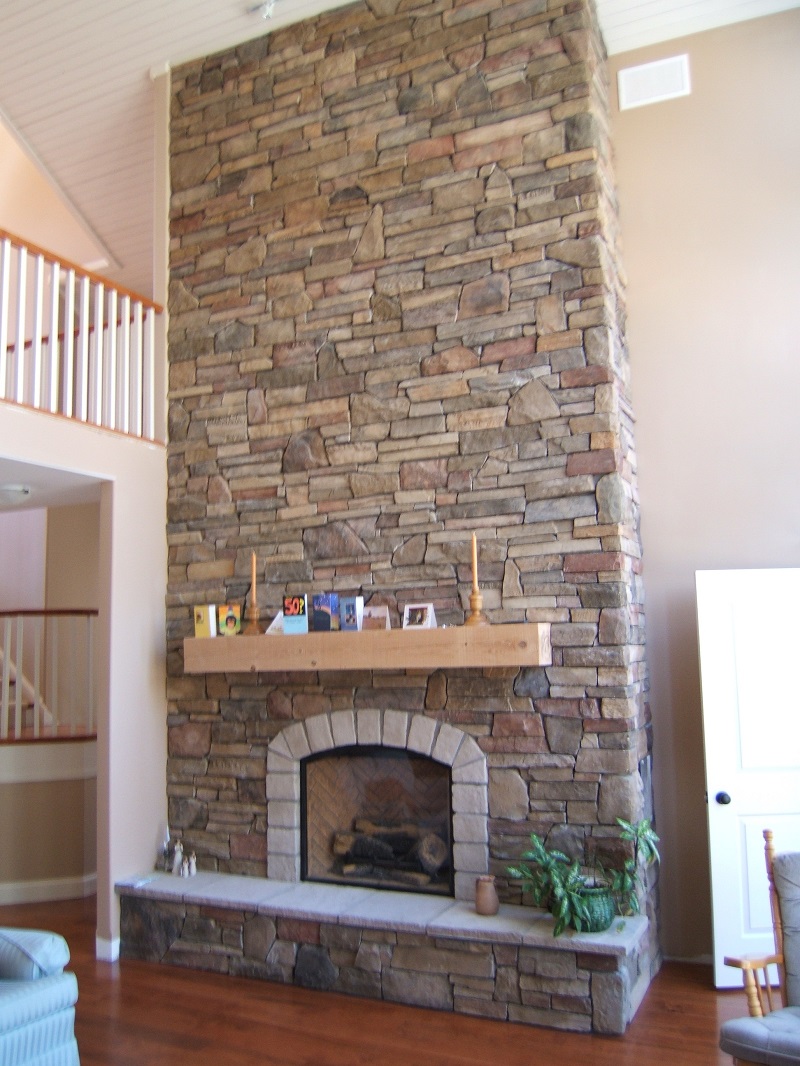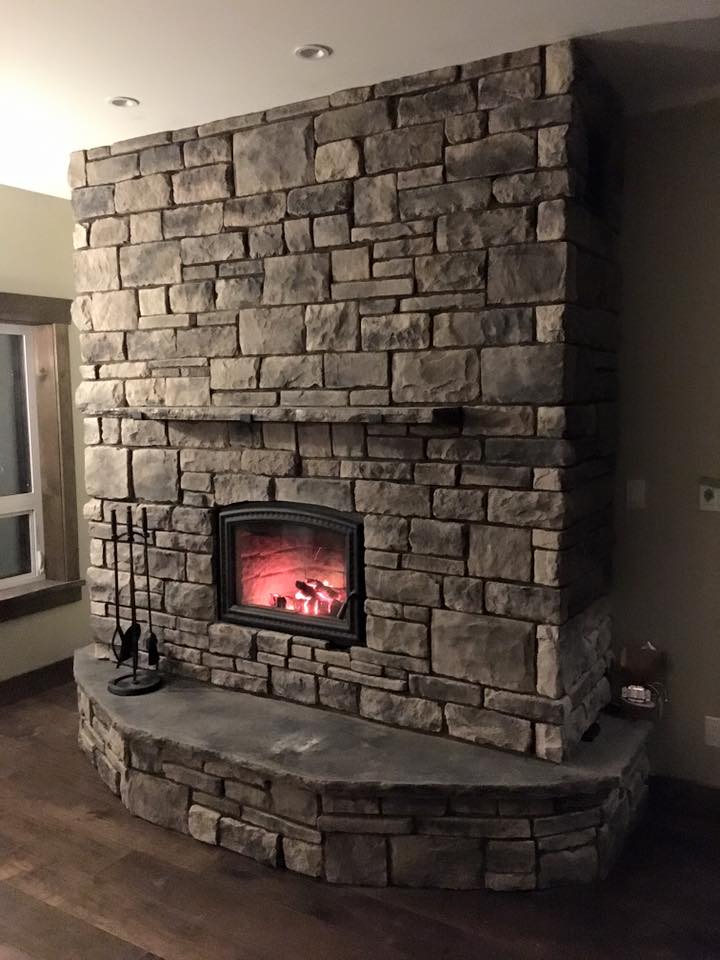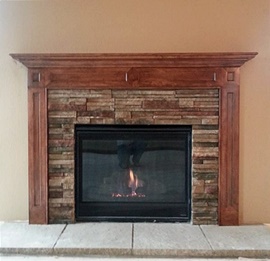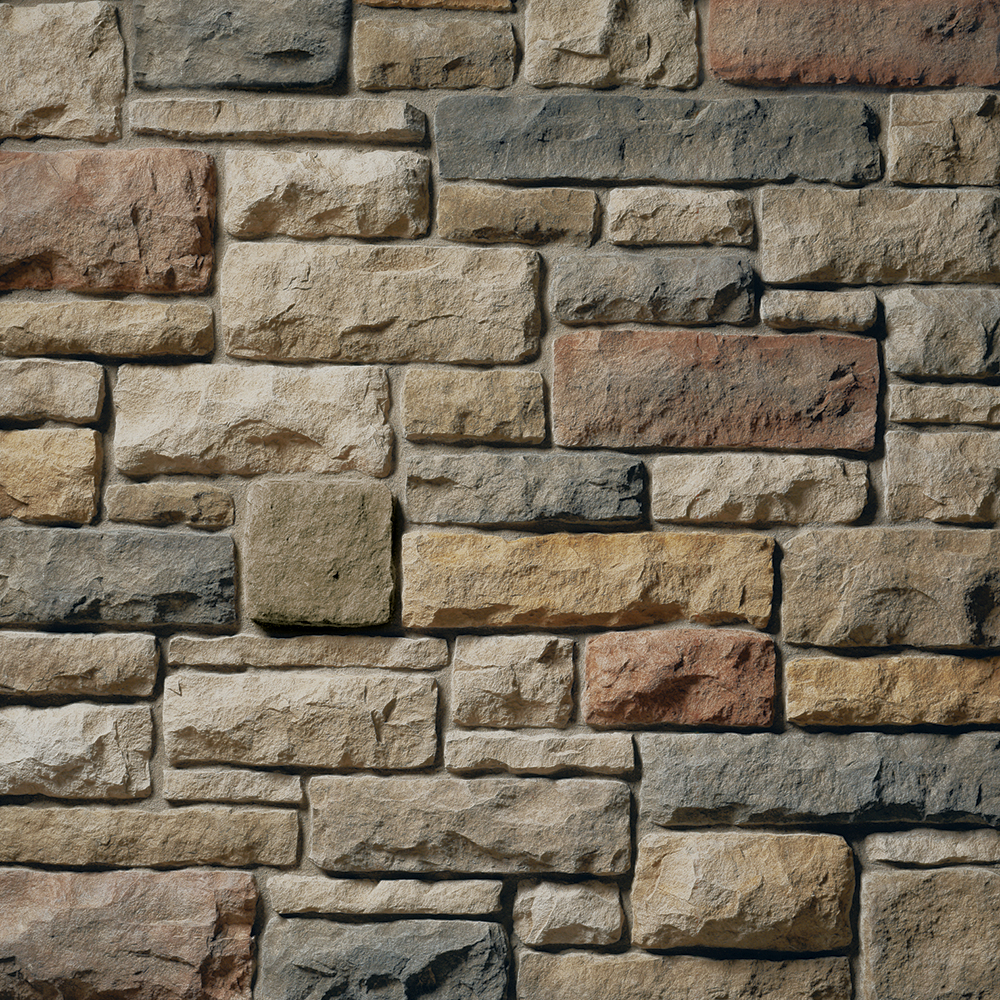Cultured Stone Fireplaces
Fireplaces have always been a symbol of comfort, relaxation, and warmth in any home. When I think about creating a cozy and stylish focal point, cultured stone fireplaces immediately come to mind. Cultured stone is a manufactured material designed to mimic the look of natural stone but with greater flexibility and often at a lower cost. Let me share everything I know about cultured stone fireplaces, from design possibilities to installation tips.
What is Cultured Stone and Why It’s Perfect for Fireplaces
- It Looks Just Like Natural Stone: Cultured stone is specially crafted using a blend of concrete, lightweight aggregates, and mineral oxide pigments. I always admire how closely it resembles natural stone. Manufacturers put a lot of effort into making cultured stone look authentic, capturing all the texture and irregularities found in real stone.
- Lightweight and Easy to Handle: One thing I love about cultured stone is its lighter weight compared to natural stone. This characteristic makes it easier to transport, cut, and install. Homeowners and contractors alike appreciate how it reduces labor costs and speeds up the installation process.
- Versatile Design Choices: Cultured stone is available in a variety of colors, patterns, and textures. Whether I’m looking for a rustic, traditional, or modern appearance, there’s always an option that suits the design. Its adaptability helps create custom looks without the limitations of natural stone availability.
- Cost-Effective Without Sacrificing Beauty: Natural stone fireplaces can be expensive, especially if the material is rare or difficult to source. Cultured stone offers a more budget-friendly alternative while still delivering a high-end appearance. This is a major reason why I see it being used in many stylish homes today.
- Resistant to Wear and Weathering: Another thing worth mentioning is how durable cultured stone is. It’s built to withstand changes in temperature, moisture, and everyday wear. This makes it a smart choice not only for indoor fireplaces but also for outdoor ones where weather exposure is a concern.
- Environmentally Friendly Option: Cultured stone often has a smaller environmental footprint than quarried stone because it uses fewer natural resources. I appreciate that manufacturers are finding ways to produce these materials more sustainably, aligning with green building practices.
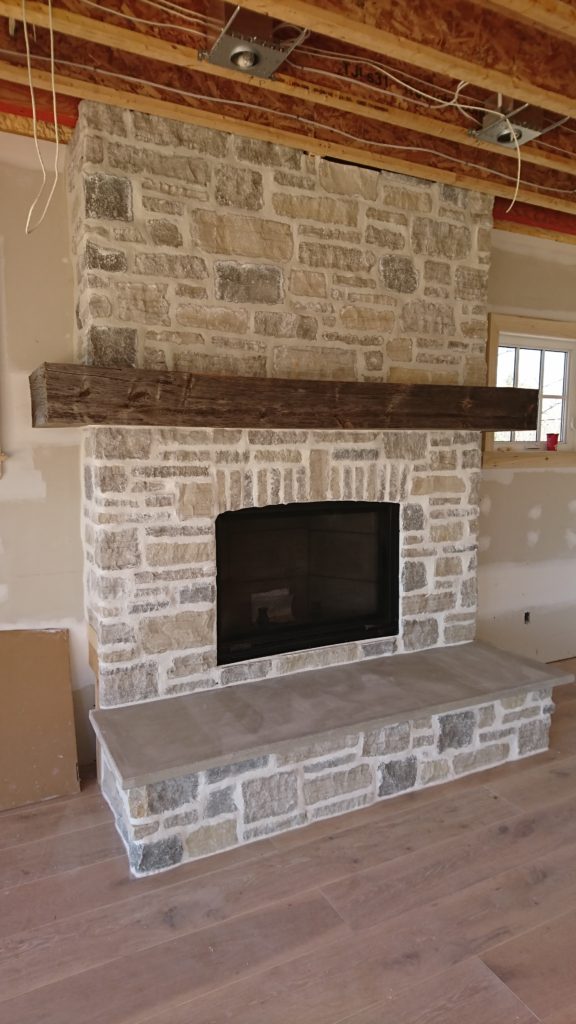
Different Styles of Cultured Stone Fireplaces
Rustic Stacked Stone Look
One of my favorite styles is the rustic stacked stone appearance. This style uses smaller, linear pieces that are layered to create depth and texture. It works beautifully in cabins, lodges, or any space aiming for a cozy, natural atmosphere.
Traditional Fieldstone Charm
Fieldstone is another classic look available in cultured stone. The rounded, irregular shapes create an old-fashioned vibe that works perfectly in country-style or farmhouse interiors. I often see this style used to bring warmth to larger living rooms.
Sleek Modern Slabs
For those who prefer contemporary aesthetics, cultured stone is also available in clean, large-slab designs. These options offer smooth finishes and minimal grout lines, which give the fireplace a sophisticated, modern appearance. I think this style pairs nicely with minimalist or urban interiors.
Blended Colors for Custom Looks
Manufacturers offer cultured stone in various color blends. Whether I want earthy browns, soft grays, or a mix of tones, there’s always something to match the overall design palette. Custom blends are great for coordinating with existing decor or accent walls.
Ledgestone Textures for Depth
Ledgestone cultured stone is another popular style I admire. It’s made up of long, narrow stones with uneven depths, creating lots of visual interest. This style works well for fireplaces because it draws attention and adds texture without being overpowering.
Castle Stone for a Grand Feel
Castle stone is perfect for making a bold statement. These larger, block-like pieces create a stately, formal look often seen in luxurious homes or grand fireplaces. I appreciate how cultured stone can replicate this expensive style at a fraction of the cost.
Benefits of Installing Cultured Stone Fireplaces
Faster Installation Time
Compared to natural stone, cultured stone is much easier to work with. It can be installed over most existing surfaces with the right preparation. This faster installation time means less disruption in my home and quicker project completion.
Lightweight Materials Reduce Structural Concerns
Because cultured stone weighs less than natural stone, it doesn’t require additional structural support in most cases. I find this particularly helpful in older homes where reinforcing walls or floors can be costly and complicated.
Customizable Design Possibilities
Cultured stone can be molded and cut to fit nearly any space. Whether I’m designing a simple fireplace face or a large, intricate feature wall, the flexibility of cultured stone gives me creative freedom.
Minimal Maintenance Required
Cultured stone fireplaces are low-maintenance. Regular dusting and occasional wiping are usually enough to keep them looking fresh. Some types even have built-in sealants that resist stains, making life easier for busy homeowners like me.
Suitable for Both Indoor and Outdoor Use
Another big plus is that cultured stone can be used inside or outside. I love the idea of having a cultured stone fireplace on the patio or deck, bringing indoor comfort to outdoor living spaces.
Wide Availability in the Market
Cultured stone products are widely available from many manufacturers, making it easy to find options locally or online. This availability ensures that I have plenty of choices to suit both my taste and budget.
Important Things to Consider Before Installation
Surface Preparation is Key
Proper surface preparation is crucial for cultured stone installation. The surface needs to be clean, dry, and structurally sound. I always advise checking for moisture issues beforehand to prevent long-term damage.
Choosing the Right Mortar and Adhesives
Not all mortars are created equal. Using the correct mortar specifically designed for cultured stone ensures better adhesion and long-lasting results. I always recommend consulting with a professional about the best products for your specific project.
Sealing Cultured Stone for Added Protection
While cultured stone is durable, sealing it provides an extra layer of protection against stains and moisture. Especially if I’m installing the fireplace outdoors or in a kitchen or bathroom area, sealing is a smart step to take.
Grout Line Decisions Affect Final Look
The width and color of grout lines can change the overall appearance of the fireplace dramatically. Tight grout lines create a modern, sleek appearance, while wider lines lean toward a rustic style. I always take time to plan this carefully.
Considering Heat Resistance
While cultured stone is generally heat-resistant, the fireplace design should ensure that direct heat does not damage the material. I like to use non-combustible materials in areas exposed to open flames or extreme heat.
Professional Installation vs. DIY
Installing cultured stone fireplaces can be a manageable DIY project for experienced homeowners. However, for intricate designs or large areas, hiring a professional ensures that the job gets done right. I always weigh the costs against my skills before deciding.
Maintenance Tips and Common Mistakes to Avoid
Regular Cleaning Makes a Difference
Cultured stone fireplaces should be cleaned regularly with a soft brush or cloth. Harsh chemicals or power washers can damage the surface. I prefer using mild soap and water to remove dust and dirt without risking the finish.
Avoiding Excessive Moisture Exposure
Excess moisture can deteriorate cultured stone over time. If I’m installing the fireplace outdoors, proper sealing and drainage are essential to prevent water from seeping behind the stone.
Preventing Stains with Sealants
Certain types of cultured stone can stain if exposed to oils, soot, or dirt. Applying a sealant helps create a barrier that resists staining. I make it a habit to reapply sealants periodically, depending on exposure.
Repairing Chips and Cracks Promptly
Small chips or cracks can sometimes occur, especially in high-traffic areas. Addressing these issues quickly prevents them from getting worse. I’ve found that repair kits specifically designed for cultured stone work quite well.
Maintaining Grout Integrity
Grout lines should be inspected regularly for signs of wear or cracking. Loose or missing grout can allow moisture to get behind the stone, leading to bigger problems. Keeping the grout in good shape is part of my regular maintenance routine.
Avoiding Incompatible Cleaning Products
Some cleaning agents contain acids or harsh chemicals that can discolor cultured stone. I always read product labels carefully and stick to cleaners that are safe for stone surfaces to avoid accidental damage.
Custom cultured stone fireplace
Cultured Stone Fireplaces – The Cultured Stoners
Cultured Stone Fireplaces Cultured Stone Fireplaces Pictures
Stone Fireplaces – Brown Dog Contracting Ltd.
Cascade Stone Blog Brick Veneer u0026 Manufactured Stone
Stone veneer fireplaces Cultured stone Boral cultured stone
Cultured Stone Chardonnay Limestone – Fireplace Stone u0026 Patio
Related Posts:

